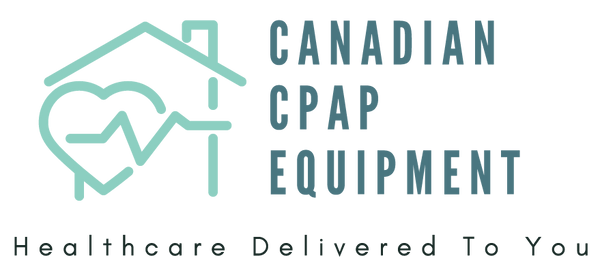Full-face CPAP masks cover both the nose and mouth, providing effective PAP therapy—especially for mouth breathers or those needing higher pressures. As a respiratory therapist with over a decade of acute care experience, I’ve often relied on these masks in hospital settings to deliver reliable therapy, though comfort is rarely a priority in that environment. Thankfully, home-use masks have come a long way. Modern options like the ResMed AirFit F40, F30i, and F&P Vitera offer improved comfort, better seals, and greater flexibility for various sleep positions. In this guide, I’ll outline the benefits, drawbacks, and key features of CPAP Full Face Mask to help you choose the best option for your needs.
Benefits Of A Full-Face CPAP Mask
Research published by PubMed in 2020 underscores the importance of proper mask selection. Poorly fitting or leaky masks can reduce therapy effectiveness and adherence. While nasal masks may be ideal for many, full-face masks remain a top choice for specific patient needs (source).
✔️ Ideal for Mouth Breathers
If you breathe primarily through your mouth, a full-face mask ensures that therapy remains effective by delivering pressure through both nasal and oral pathways.
✔️ Better for Higher Pressures
For individuals who require higher PAP pressures, full-face masks offer more surface contact and stability, minimizing leaks and improving overall seal.
✔️ Supports Congestion or Nasal Issues
If you frequently suffer from seasonal allergies, sinus infections, or chronic nasal congestion, a full-face mask allows you to continue therapy uninterrupted—even when nose breathing becomes difficult.
Author Insight:
In higher pressure therapies, masks are more likely to leak. A well-designed full-face CPAP mask will feel like it’s floating on your face, while still providing an airtight seal—no need to over-tighten the straps.
Drawbacks of Full-Face CPAP Masks
While effective for many users, full-face masks are not for everyone.
❌ Can Feel Bulky or Claustrophobic
Full-face masks are larger than nasal or nasal pillow masks, which can be an issue for light sleepers, side sleepers, or those prone to claustrophobia.
❌ May Be Less Ideal for Active Sleepers
Because they cover a larger area of your face, some people find these masks shift more during sleep, potentially disrupting therapy if not properly secured.
Clinical Experience:
I’ve fit hundreds of patients with full-face masks. Some never adjust to the feel of them, while others find they’re the only style that works. What matters most is your individual comfort and sleeping style.
Popular Full-Face CPAP Masks to Consider
Every full-face CPAP mask is made up of three key components: the frame, the cushion, and the headgear. The combination of these parts determines how comfortable and effective the mask will be for each user.
Here are three of the most popular and trusted full-face CPAP masks available in Canada:
Frame: Designed with minimal hard plastic, the F40 offers a low-profile frame that’s ideal for side sleepers. Its unobtrusive design doesn’t block your line of sight, making it easy to read or watch TV before bed.
Cushion: The under-the-nose silicone cushion provides a soft, minimal-contact seal that feels less bulky than traditional full-face masks—reducing feelings of claustrophobia.
Headgear: Soft, breathable fabric with multiple adjustment points ensures a comfortable and secure fit. Magnetic clips make putting the mask on and taking it off quick and hassle-free.
Frame: Slightly more rigid than the F40, the F30i provides added structure and support, which helps maintain a seal even at higher pressure settings. The under-the-nose design keeps the face open and allows for good visibility before sleep.
Cushion: Soft silicone cushion fits gently under the nose, offering reduced bulk and an alternative for users who are new to full-face masks.
Headgear: Features a unique top-of-head hose connection that keeps tubing out of the way—great for active sleepers who shift positions throughout the night.
Frame: The over-the-nose frame provides a more traditional fit but with modern comfort upgrades. It distributes pressure evenly across the face, enhancing the seal for users who require higher pressure therapy.
Cushion: Incorporates F&P’s RollFit™ cushion technology, which adapts as you move to maintain contact and reduce pressure points—ideal for minimizing discomfort overnight.
Headgear: Made with breathable VentiCool™ fabric that helps reduce heat and moisture buildup, making the mask more comfortable for extended wear.
Why and How This Article Was Written
This article was written by a Canadian respiratory therapist with over a decade of clinical experience treating sleep apnea both in hospital settings and in-home therapy programs. It is based on direct patient feedback, published clinical evidence, and real-world experience fitting patients with CPAP masks.
Our goal is to empower you with practical, trustworthy advice—so you can choose the right full-face CPAP mask based on your specific needs and preferences.
FAQ: Full-Face CPAP Masks
A full-face CPAP mask covers both your nose and mouth and delivers pressurized air to keep your airway open during sleep.
You should consider one if you breathe through your mouth, have chronic nasal congestion, need high pressure settings for your sleep apnea or simply, prefer the style.
Modern full-face masks have drastically improved in the last decade and are much more comfortable than hospital-grade options. Look for masks with minimal-contact designs and flexible headgear.
Top options include the ResMed AirFit F30i, AirFit F40, and F&P Vitera, each designed for different comfort and pressure needs. Get the full details here

